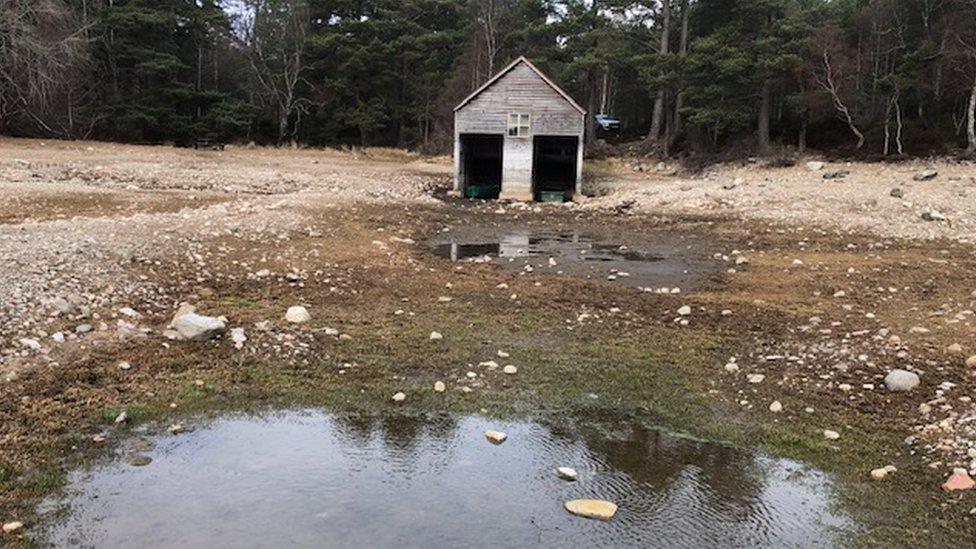Natural landmarks disappearing across the world
- Published
- comments

It has been estimated that 35 million gallons of water has been lost
A popular loch in the Scottish Highlands is at risk of disappearing after losing millions of gallons on water since September last year.
Loch Vaa, near Aviemore, is fed by a spring and its usually water-lapped boathouse has been a popular spot to photographers and artists.
However, the loch's levels have dropped by almost 1.5 metres in the past nine months.
The Scottish Environment Protection Agency (Sepa) said that Loch Vaa had suffered due to a "relatively dry" winter.
Loch Vaa is not the only natural landmark that is disappearing. Here are some more examples from around the world.
Aral Sea
The Aral Sea, in Central Asia, used to be the fourth largest lake in the world, after the Caspian Sea, and Lakes Superior and Victoria. Now barely 10% of it is left.
Over the past 40 years, around 60,000 sq km of water, in places 40m deep, has evaporated into thin air.
The Soviet Union wanted to turn Central Asia into the world's largest producer of cotton.
So it's thought to have started drying up when lots of dams and canals were built in the 1960s to help this process.
They stopped two big rivers from providing water into the Aral Sea - and the sea started shrinking.
Plus, the huge volumes of chemicals washed into it over the years gradually became more concentrated, until the fish died.
The Great Barrier Reef
One of the world's seven natural wonders, the Great Barrier Reef contains some 900 islands and 3,000 smaller reefs.
It's larger than the UK, the Netherlands and Switzerland combined.
But, in 2012, it was reported that half of the Great Barrier Reef had disappeared in just 27 years because of global warming.
Some scientists think the reef in its current diverse form could be largely gone by 2050.
The Dead Sea
The Dead Sea, a salty lake located at the lowest point on Earth, is gradually shrinking under the heat of the Middle Eastern sun.
It's famous because you can't sink in it. It is eight or nine times saltier than the oceans of the world.
It has been shrinking at an alarming rate - the surface level is dropping more than a metre (3ft) each year.
One of the reasons for this is that the River Jordan is drying out. For centuries it's been really important in providing fresh water for the Dead Sea.
Its waters have been taken away to support flourishing population growth and agricultural activity in the region.
Despite this, scientists think it's unlikely the Dead Sea will ever disappear completely.
White Cliffs of Dover
Back in 2016, it was reported that the iconic white cliffs of Dover had been eroding 10 times faster than they had over the past few thousand years.
Scientists said the huge acceleration was because of human management of the coastline, which stripped some cliffs of their protective beaches, as well as changes in storm intensity.
The National Trust have been raising money in an attempt to protect the cliffs from erosion.
In 2017, Dame Vera Lynn - who had a famous song called "The White Cliffs of Dover" - fronted a campaign to raise money to save the cliffs.
- Published8 October 2018
- Published9 October 2018
- Published1 May 2019
